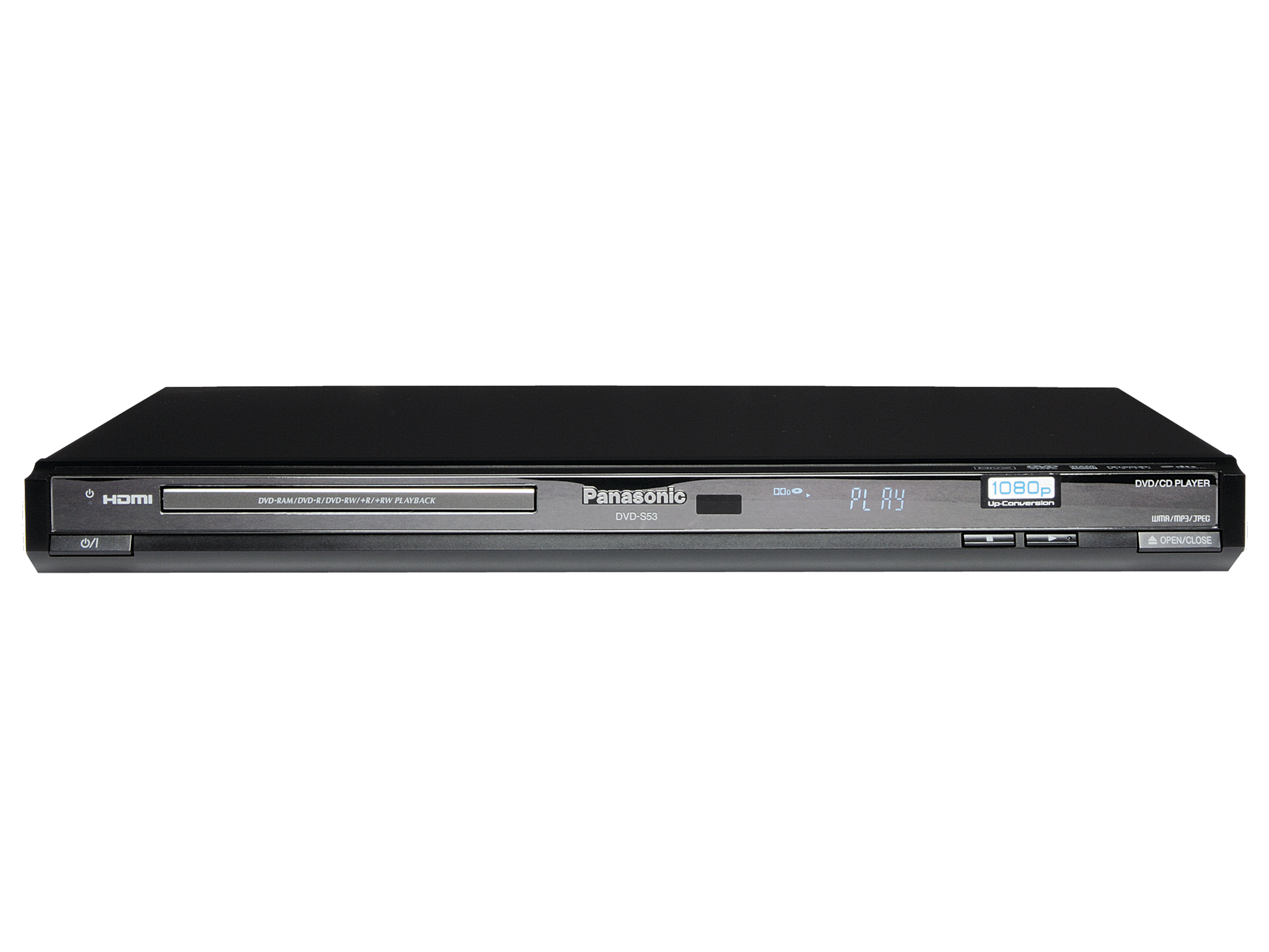TechRadar Verdict
The DVD-S53's picture quality might be amazing, but there aren't quite enough extras to make it the only choice for the price
Pros
- +
Top-notch pictures
- +
Attractive design
- +
Good blacks
Cons
- -
Untidy user interface
- -
No USB port
Why you can trust TechRadar
Panasonic has gone all-out on the 1080p upscaling front this year, putting the feature into several of its DVD recorders and this player.
The DVD-S53 is no one-trick pony, though, and offers a list of other tempting features. For starters, it plays DVD-RAM discs and every other recordable DVD format, plus DiVX, MP3, WMA and JPEG files.
Panasonic's design approach is interesting too: not only are its new decks slimmer than ever, but they're also available in a sleek black finish, topped with a delightful mirrored strip running along the fascia, which has minimal controls.
Sadly the lack of a USB port from the front panel, puts it behind Pioneer's DV-400V in the features hierarchy, and means the only way you can view your multimedia files is from CD or DVD.
However, all the other sockets are present and correct. The HDMI output offers 576i, 576p, 720p, 1080i and 1080p output, as well as facilitating Viera Link. The component video sockets offer progressive scan analogue signals, and they're joined by a single Scart socket, S-video output and an electrical digital audio out for sending Dolby Digital and DTS bitstreams to your AV receiver.
Digging into the setup menu, we find a generous selection of picture and sound adjustments. There are five picture presets, including an interesting 'Soft Skin' mode, which reduces redness to make skin tones seem more life-like. You'll also find specific modes for Film and Video material and three levels of Digital Noise Reduction. On the audio front, there's Advanced Surround and Dialogue Enhancer.
The user interface isn't up to Panasonic's usual slick standards. The remote is excellent and its buttons are in all the right places, but sometimes the deck can be a touch slow to respond. Also, the main setup menu isn't laid out with the same sense of logic as Pioneer's offering, while the Functions menu - a series of onscreen banners listing key setup options - is a good idea but not particularly well executed.
Sign up for breaking news, reviews, opinion, top tech deals, and more.
The DVD-S53's picture performance is right up there with the best of them. The first thing that grabs you is the density of the picture, brought about by a fantastic black level. The deck is capable of conveying lots of shadow detail within dark areas too, a good demonstration of which are the various shades of black within King Kong's glossy black fur.
And this terrific natural black level also helps to make fine detail look sharp and punchy, particularly with the HDMI output set to 1080p and viewed on our full HD test TV. Shots of Kong's cliff-top dwelling are peppered with bushes, leaves and branches, all of which are meticulously presented, as is the CG texture of scaly dinosaur skin.
Our test disc offers plenty of bright colours for the deck to get its teeth into, a task which it clearly savours. Saturation is strong and the deck's processing finds a pleasing balance. The Soft Skin setting is also effective, giving Naomi Watts' face a convincingly gentle tone.
The DVD-S53 is every bit as proficient as the Pioneer at taming MPEG noise, and there's very little grain to speak of. The small amount that is noticeable disappears using the Noise Reduction mode, but this softens the picture and compromises edge definition.
Audio performance is fine and DiVX playback is enjoyable, but overall the deck is less accepting of compressed video files than some others. But its picture performance is one of the best.
Tech.co.uk was the former name of TechRadar.com. Its staff were at the forefront of the digital publishing revolution, and spearheaded the move to bring consumer technology journalism to its natural home – online. Many of the current TechRadar staff started life a Tech.co.uk staff writer, covering everything from the emerging smartphone market to the evolving market of personal computers. Think of it as the building blocks of the TechRadar you love today.
